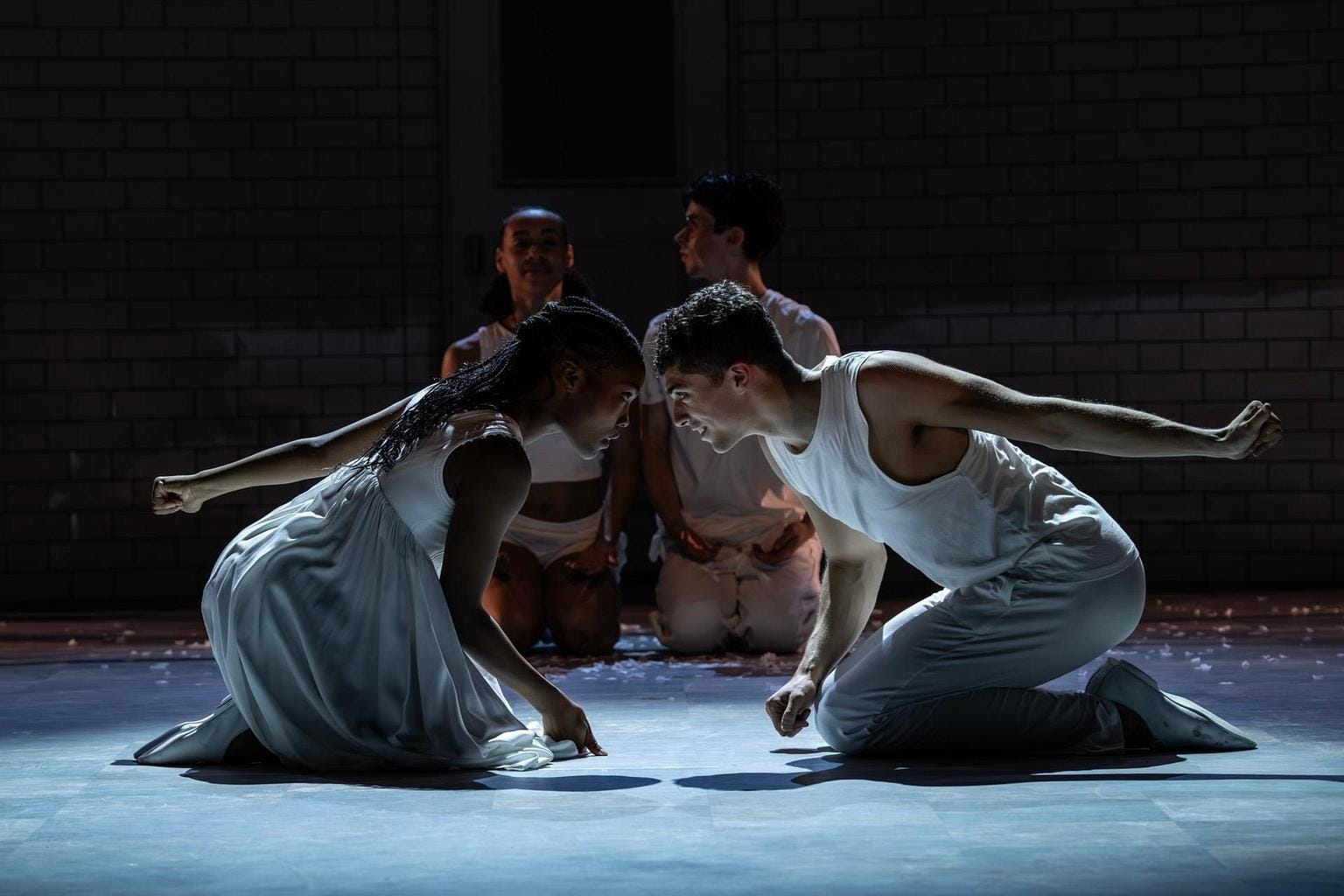MATTHEW BOURNE’S ROMEO AND JULIET
Ahmanson Theater
Los Angeles
Feb. 4, 2024
The Ahmanson Theater in Downtown Los Angeles, twinkling with warm light and towering like a 20th-century castle, looked particularly dramatic on this stormy February night — fitting, for the occasion, as the theater was in the middle of a month-long run of British choreographer Matthew Bourne’s Romeo and Juliet. Bourne is known for his interpretations and revivals of classics like Edward Scissorhands, My Fair Lady, and Sleeping Beauty; his new ballet was advertised as a modern reimagining of the Shakespearean tragedy.
This Romeo and Juliet takes place not in fair Verona but in the future at the Verona Institute: a cross between a British boarding school and a mental institution. The ensemble dancers are adorned in flowy white shirts and loose-fit pants as they swarm in geometrical configurations. Their thrashing bodies convey frustration and repression as institution guards watch over them. Instead of Montague versus Capulet, Bourne tells a story of teenager versus authority. The titular Romeo and Juliet are not kept apart by generations-spanning familial conflict but by gender-segregated sleeping quarters.
This missing layer of family dynamics is most noticeable in Act II, during the pivotal fight scene where Romeo kills Tybalt. In Bourne’s version, Tybalt is, rather than Juliet’s cousin, a security guard for the institution — a stock villain whom none of the characters, nor the audience, has been primed to have empathy for. In fact, nearly all of Tybalt’s time onstage is spent emotionally and physically abusing Juliet. Shakespeare’s Tybalt, while short-tempered and violent, is family to Juliet — and when he dies, she is horrified to hear of the loss. The depth of Shakespeare’s story is diminished without Juliet’s internal dissension over her lover/new secret husband killing her own blood. By Act III, the story falls flat because there is less at stake.
Rebellion against tradition makes sense for Bourne as an artist. The choreographer came up in the 1980s during the postmodern dance movement that developed to reject the rules of classic dance forms in favor of something more appealing to the masses. His story questions the rules of Romeo and Juliet in the same way his choreographic style, with its affinity for flexed feet and floor work, questions the confines of ballet — the ruthless kind associated with unnatural limb placement and toe-crushing pointe shoes. The dancers of New Adventures, Bourne’s dance company, wear jazz shoes and — while moving their bodies in ways that still require decades of training — harness the rules of physics to do so. In this case, they are playing common people in a mental institution, not royalty. The subversion of expectations is intrinsic to Bourne’s work, but with Romeo and Juliet, he sacrifices drama for it.
On my way down from the balcony level back to the lobby, I, out of curiosity, tuned into the frequency of other audience members’ postshow conversations. Two noted the music based on Sergei Prokofiev’s original 1935 score (tremendous and dynamic). Another group raved about the endearing first kiss duet between Romeo and Juliet (which put every iconic movie kiss to shame). Meanwhile, I questioned whether the revised story was still able to be considered Romeo and Juliet.
By the time I reached the bottom of the carpeted staircase, it seemed that the extent of one’s satisfaction — or disappointment — with the ballet depended on what drew them to the glowing fortress of a theater in the first place: Were they searching for something shiny and new? Or a classic spectacle?






